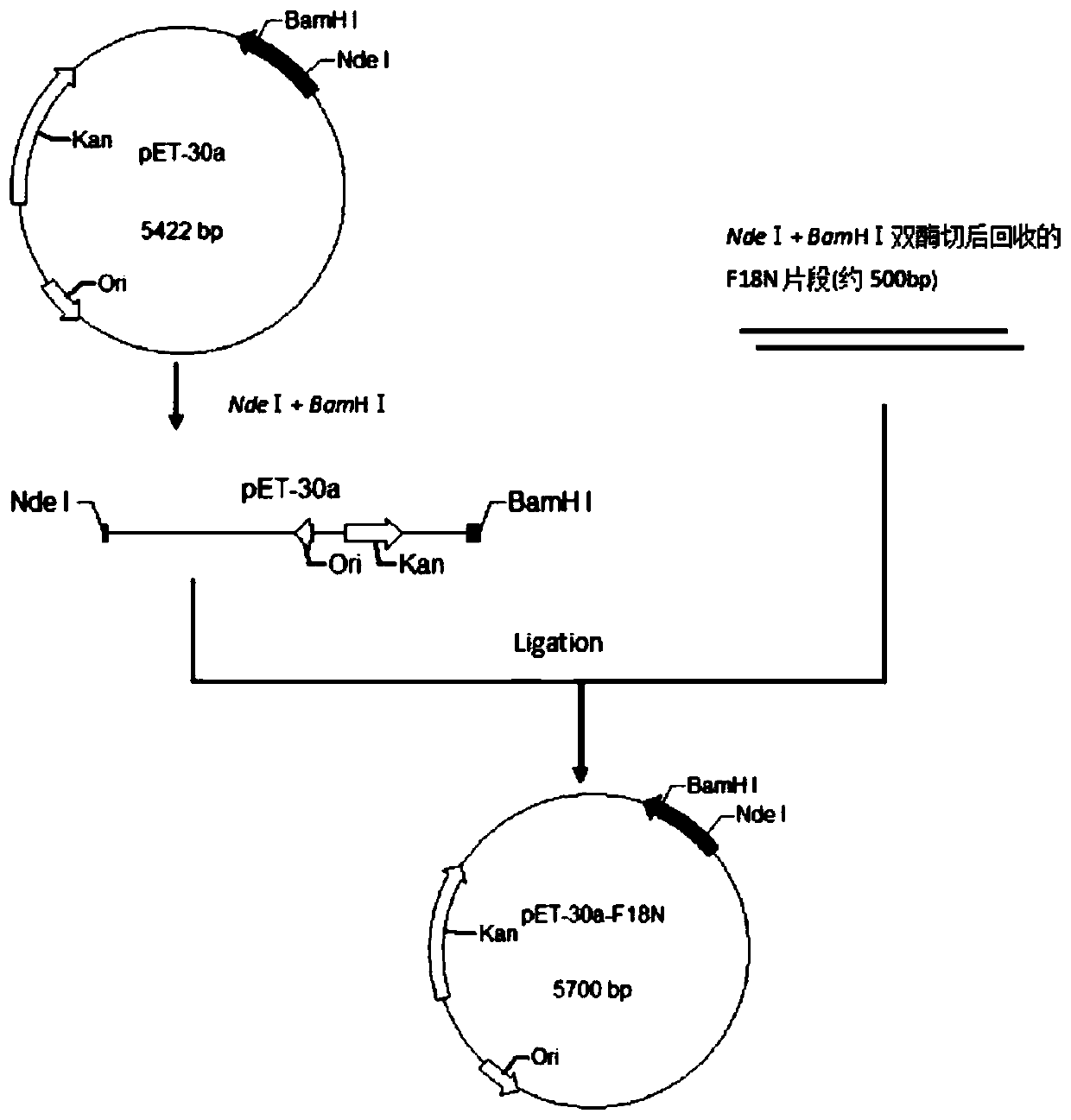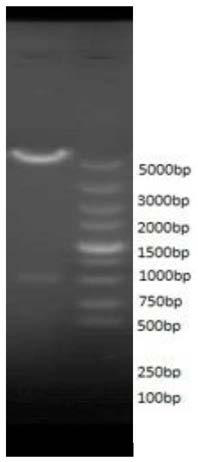Novel human fibroblast growth factor 18 and soluble recombinant expression method, preparation method, preparation and applications thereof
A technology for human fibroblasts and growth factors, which is applied in the preparation methods of fibroblast growth factors, peptides, growth factors/inducing factors, etc., can solve the problems of cumbersome process, harsh renaturation conditions, unstable peptide bonds, etc. To achieve the effect of simple process and beneficial to industrial production
- Summary
- Abstract
- Description
- Claims
- Application Information
AI Technical Summary
Problems solved by technology
Method used
Image
Examples
preparation example Construction
[0042] A preparation method of novel human fibroblast growth factor 18, comprising the steps of:
[0043] (1) Use pressure homogenate to crush at low temperature, and collect the supernatant by centrifugation;
[0044] (2) Anion chromatography was used to capture FGF18△N in the supernatant of broken cells;
[0045] (3) Copper ions are used as the correct pairing accelerator of disulfide bonds;
[0046] (4) The target product was captured by heparin affinity chromatography after the correct disulfide bond pairing.
[0047] The preparation method of novel human fibroblast growth factor 18 disclosed by the present invention comprises the following specific steps:
[0048] S1 selects the expression system containing the T7 promoter as the expression plasmid vector, and the corresponding Escherichia coli as the host bacteria;
[0049] S2 Select two suitable endonucleases to double-enzyme-cut the plasmid vector and the N-terminal deletion of the human fibroblast growth factor 18 ...
example 1
[0071] Example 1. N-terminal deletion of human fibroblast growth factor 18 genetically engineered strain construction and induced expression
[0072] The cDNA sequence (SEQ ID NO: 2) designed based on the amino acid sequence (SEQ ID NO: 1) of human fibroblast growth factor 18 with N-terminal deletion. The whole gene was synthesized and inserted into the vector plasmid pUC-57 to obtain the pUC-57-FGF18△N plasmid. By using NdeI and BamHI restriction sites, the FGF18△N gene was connected to the carrier plasmid pET-30a to construct the pET-30a-FGF△N recombinant plasmid, and the above plasmid was transformed into E. coli expression host strain BL21(DE3)PlysS , after expression screening, construct pET-30a-FGF18△N / BL21(DE3)PlysS recombinant engineering bacteria. Streak inoculation of the engineering strains, select the bacterial lawn and inoculate it into the test tube containing the medium, transfer it to the triangle agent after activation, and cultivate it overnight to become th...
example 2
[0073] Example 2. Disulfide bond formation of N-terminally deleted human fibroblast growth factor 18
[0074] After the bacteria were resuspended, the bacteria were broken by high-pressure homogenization, and FGF18△N was captured by anion chromatography, diluted with diluent (20mM Tris, pH7.5) at an equal volume ratio of 2:1, added with a final concentration of 5uM copper ions, and stirred at a low speed at 4°C for 4h. As detected by HPLC, the disulfide bond pairing rate was not lower than 90%, and FGF18△N with high activity was obtained.
PUM
 Login to View More
Login to View More Abstract
Description
Claims
Application Information
 Login to View More
Login to View More - R&D
- Intellectual Property
- Life Sciences
- Materials
- Tech Scout
- Unparalleled Data Quality
- Higher Quality Content
- 60% Fewer Hallucinations
Browse by: Latest US Patents, China's latest patents, Technical Efficacy Thesaurus, Application Domain, Technology Topic, Popular Technical Reports.
© 2025 PatSnap. All rights reserved.Legal|Privacy policy|Modern Slavery Act Transparency Statement|Sitemap|About US| Contact US: help@patsnap.com



